Daimaru display
special projects
For the visual display of the shop windows at the main entrances of Daimaru Shinsaibashi,
young Italian designers Elena Salmistraro and Matteo Cibic were selected to work on two windows each.
Elena and Matteo were asked to represent, with their characteristic signs, the Japanese traditions of Yokai and Tokonoma.
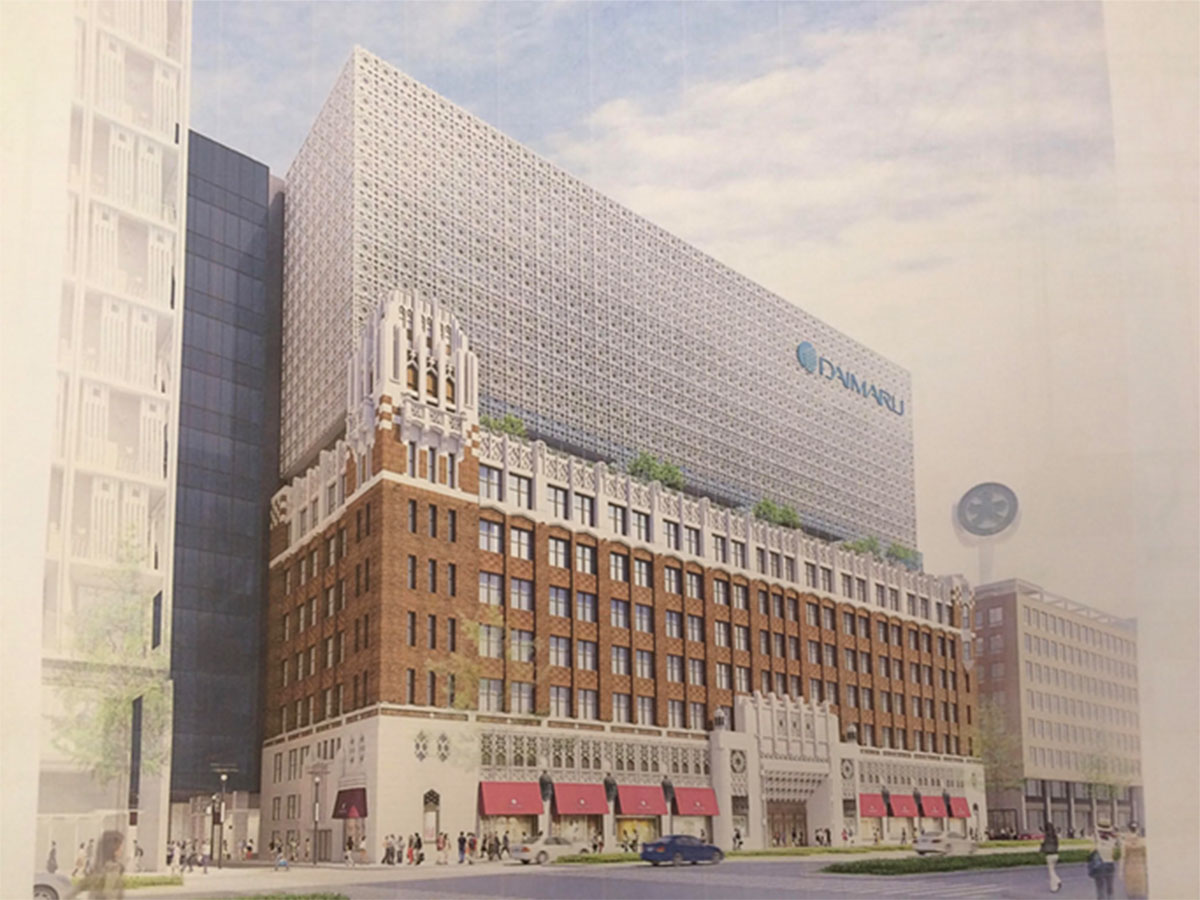
In the windows on the main facade of the building with the highest visibility (Mido-Suji), the concept for the visual display has been inspired by the tradition of Yōkai.
"The yōkai (妖怪?) - from "yō", "magic spell, witchcraft" and "kai", " creepy event", sometimes even called " youkai" or "yokai",
which can be translated as "apparitions", "ghosts", or "demons" - are a type of supernatural creature of Japanese mythology."
There is a wide variety of yōkai in Japanese mythology: yōkai is a vague term that can include virtually all monsters and supernatural beings, even creatures of occidental mythology.
Among these, Matteo and Elena have selected a figure, developing its meaning and appearance, according to their own peculiar style and with a very personal and site-specific vision.
The strong evocative power linked to the figures of tradition is faced with the products of the two young Italian designers.
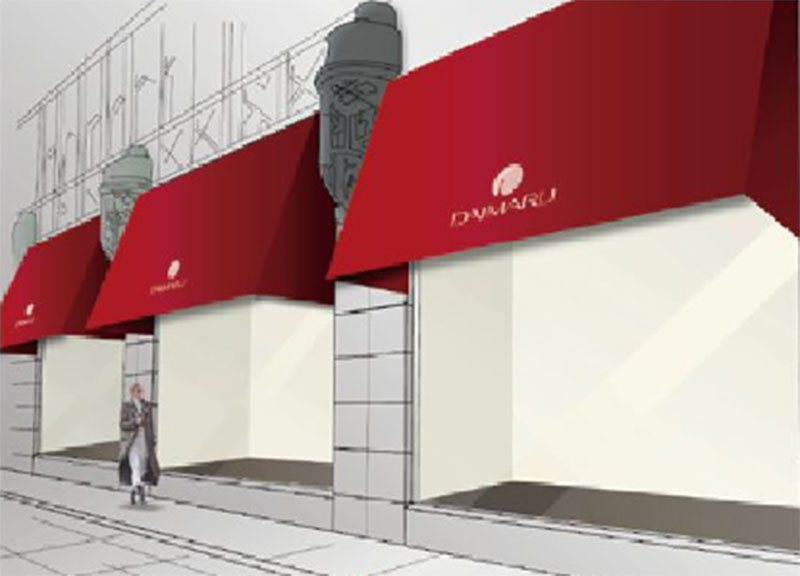
Render of Daimaru windows on the main facade of the building (Mido-Suji)
In the windows next to the secondary entrance of Daimaru Shinsaibashi (Shinsaibashi-Suji), the proposed subject has been the Tokonoma.
"A tokonoma (床の間) is a small raised alcove in the washitsu, the traditional Japanese style room with the tatami,
where Japanese scrolls, called emakimono, are usually displayed. Also Ikebana and/or bonsai often appear in them.”
According to Japanese tradition, Tokonoma is often used in the tea room. The two designers were asked to imagine a tea room,
a "sacred" place, a home for imagination, emptiness and asymmetry.
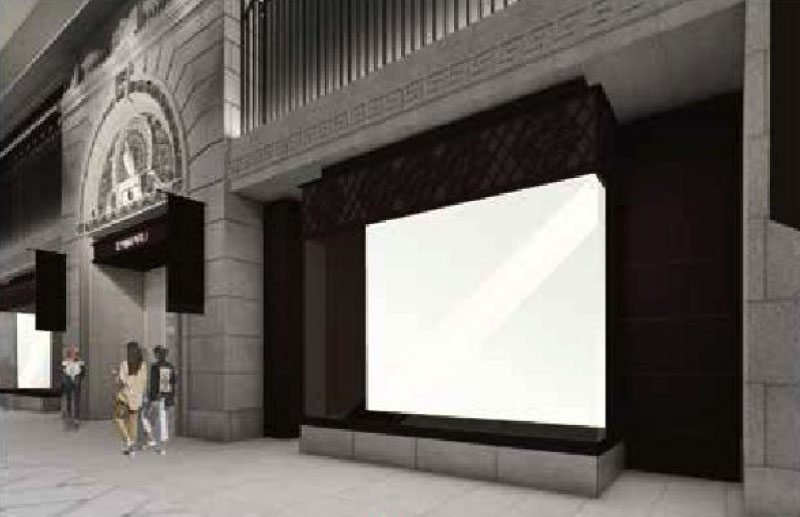
Render of Daimaru windows next to the secondary entrance of the building (Shinsaibashi-Suji)

In the windows on the main facade of the building with the highest visibility (Mido-Suji), the concept for the visual display is inspired by the tradition of Yōkai.
"The yōkai (妖怪?) - from "yō", "magic spell, witchcraft" and "kai", " creepy event", sometimes even called " youkai" or "yokai",
which can be translated as "apparitions", "ghosts", or "demons" - are a type of supernatural creature of Japanese mythology."
There is a wide variety of yōkai in Japanese mythology: yōkai is a vague term that can include virtually all monsters and supernatural beings, even creatures of occidental mythology.
Among these, Matteo and Elena have selected a figure, developing its meaning and appearance, according to their own peculiar style and with a very personal and site-specific vision.
The strong evocative power linked to the figures of tradition is faced with the products of the two young Italian designers.
In the windows next to the secondary entrance of Daimaru Shinsaibashi (Shinsaibashi-Suji), the proposed subject is the Tokonoma.
"A tokonoma (床の間) is a small raised alcove in the washitsu, the traditional Japanese style room with the tatami,
where Japanese scrolls, called emakimono, are usually displayed. Also Ikebana and/or bonsai often appear in them.”
According to Japanese tradition, Tokonoma is often used in the tea room. The two designers were asked to imagine a tea room,
a "sacred" place, a home for imagination, emptiness and asymmetry.
Yokai Primates window
by Elena Salmistraro
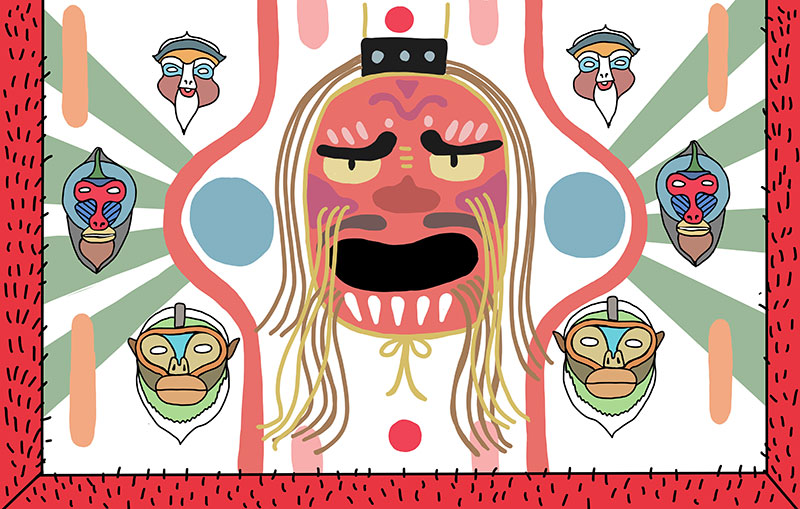
The collaboration between Elena Salmistraro and the Japanese popular culture, which is full of incredible creatures, is rich in energy and colour. The result is a Tengu mask, a reddish spirit that generally appears as a man-bird, with a very long nose and thick hair. The face of the Tengu is reinterpreted according to codes and elements that are typical of Elena's artistic language. Different layers and textures are used to design a new, contemporary, quirky and provocative, scary and also playful version of this immortal spirit, as described in popular legends. The combination of the human and animal figures is a frequent motif in Elena's work, and the Primates Masks, which are present in the background, are a clear example of that. The design in the background, which is inspired by graphics and shapes from Japanese heraldry, creates a frame that highlights and celebrates the variety of Elena's creative elements.
Designer's products in the setup:
PRIMATES MASKS - Decorative masks by Bosa Ceramiche
Yokai Splendor window
by Matteo Cibic
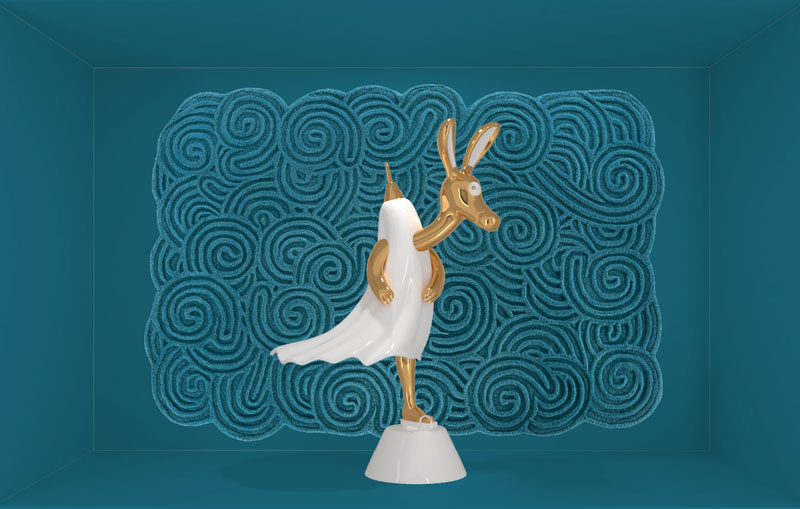
Matteo Cibic's world of animals meets Japan and does so by playing with its popular culture. Starting with the Tsukumogami, the Karakasa is the representation of the soul of everyday objects that come to life at the age of 100. The subject of this site-specific installation is the Karakasa, an umbrella with a mono-eye and a leg, which once it has reached the age of 100, comes to life and becomes a playful joker. Karakasa Donky is part of the Paradiso Dream series and uses the same materials, finishes and imagination. The Karakasa is played by Donky, one of the characters in the series, transformed for the occasion: Donky has only one eye and is standing on one leg, wearing the geta (typical Japanese sandal). His dress is an umbrella that moves powered by the wind. In the background, a carpet from the Karesansasui series, another creation by Matteo Cibic inspired by Japan and its zen gardens, completes the installation.
Designer's products in the setup:
KARAKASA DONKY - Sculpture by Paradiso Dreams
KARESANSUI - Rug by Scarlet Splendour
Tokonoma Primates window
by Elena Salmistraro
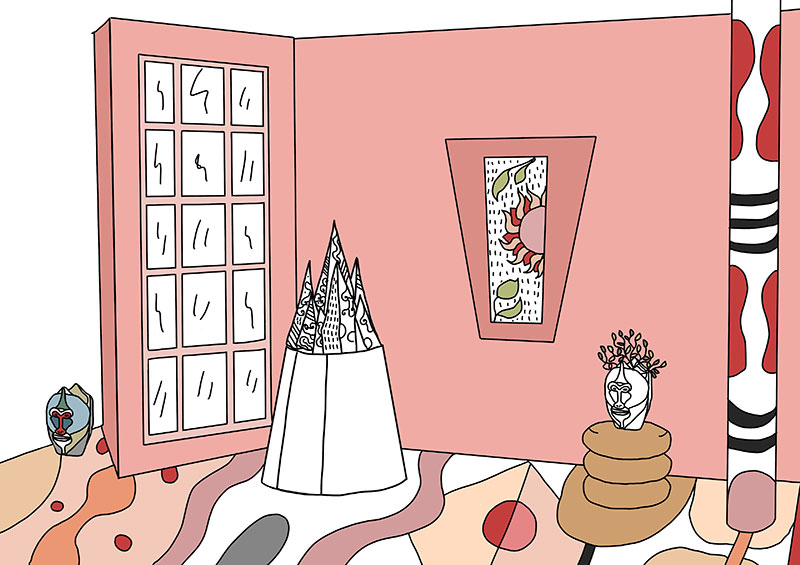
Tokonoma, in Japanese culture, is the ornamental space in the Washitsu, the traditional room used to entertain guests. It's a unique composition, featuring well-defined codes and elements, extremely elaborate in its simplicity. Elena Salmistraro suggests a white Suiseki, the result of the fusion of four irregular pyramids, which is loaded with black signs; the pyramids dialogue with a Bonsai, layed down in a total-white Primates Vase, and a Scroll, reproducing the four seasons, which will be changed according to a default calendar. The Tokobashira (the pillar on the right) and the floor will instead be filled with colors and geometric graphics, as a form of natural balance. Elena Salmistraro, in her very personal interpretation of Tokonoma, aims, through the use of graphic tricks, to relate Nature's forms, organic by definition, to the artificial ones, geometric and rigid, making them coexist with harmony.
Designer's products in the setup:
PRIMATES VASES - Decorative vases by Bosa Ceramiche
Tokonoma Domsai window
by Matteo Cibic
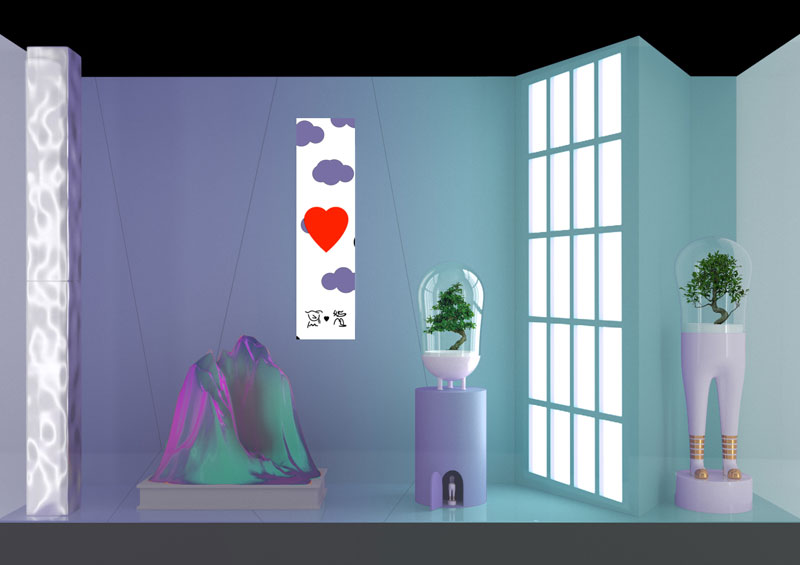
Tokonoma is a small alcove located in the Washitsu, the room where guests are welcomed according to the traditional Japanese culture. In the Tokonoma there are precise and strictly codified elements, which must have forms and be arranged in a way that expresses harmony and beauty in their simple nature. Matteo Cibic's Tokonoma seems to speak to creatures from other worlds visiting our planet. A Domsai Rocket (terrarium by Paradiso Dreams) dialogues with an opalescent Suiseki, mirrored on the Tokobashira ("pillar" on the left), with mysterious reflections. The composition is completed by a scroll representing the clouds and the "variable love", symbol of Paradiso Dreams, with the author's mark. On the right appears the imagination, the guest who admires the composition of the Tokonoma: it is a Domsai Dom, a terrarium of human dimension, with legs and a vegetable "brain". Matteo Cibic believes that in the future we will have the ability to communicate with plants and we can discover their intelligence.
Designer's products in the setup:
DOMSAI XXL - Terrarium Sculpture by Paradiso Dreams
DOMSAI ROCKET - Terrarium Sculpture by Paradiso Dreams
DOMSAI DOM - Terrarium Sculpture by Bosa Ceramiche
SUISEKI - Sculpture
TOKOBASHIRA - Sculpture
Elena
Salmistraro
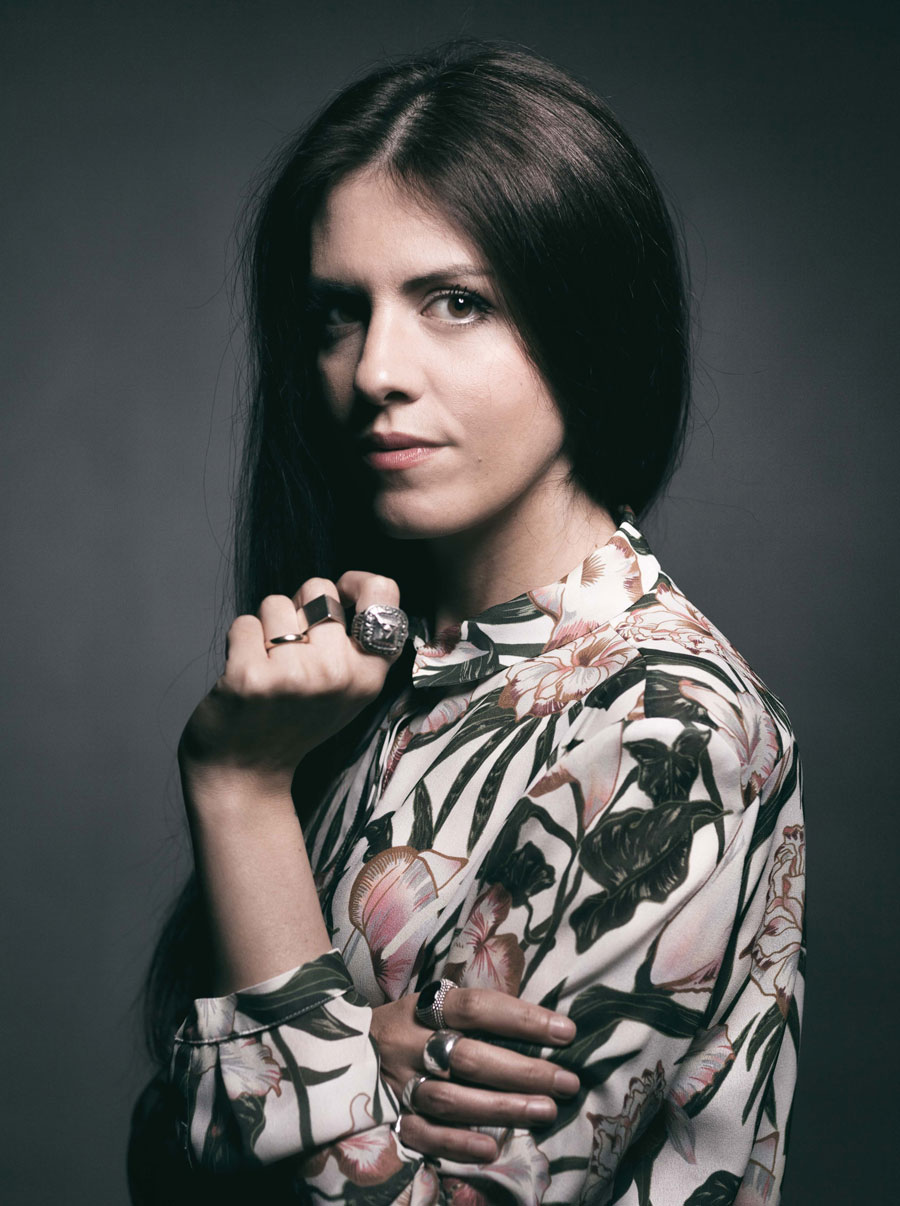
Profile
Product designer and artist,
she lives and works in Milan.
Designer and artist, she lives and works in Milan. She collaborated as a designer and artist/illustrator for leading companies in the creative industry such as Nike, Apple, Alessi, Bosa, De Castelli, and many others.
Her creations are the result of a combination of art and design. Her projects are characterized by utmost care for details,
painstaking search for the harmony of shapes and poetic style.
One of her work’s priorities is the search for the expressive language of objects, which may fascinate people by evoking emotions.
Her projects have been selected for various international exhibitions. In 2017 she won the "Salone del mobile design Award" as "Miglior designer emergente".
Since 2107, the Ministero degli Affari Esteri has appointed her as an ambassador of Italian design in the world.
In 2018 she was appointed Ambasciatrice (ambassador) of Brera Design District.
Matteo
Cibic
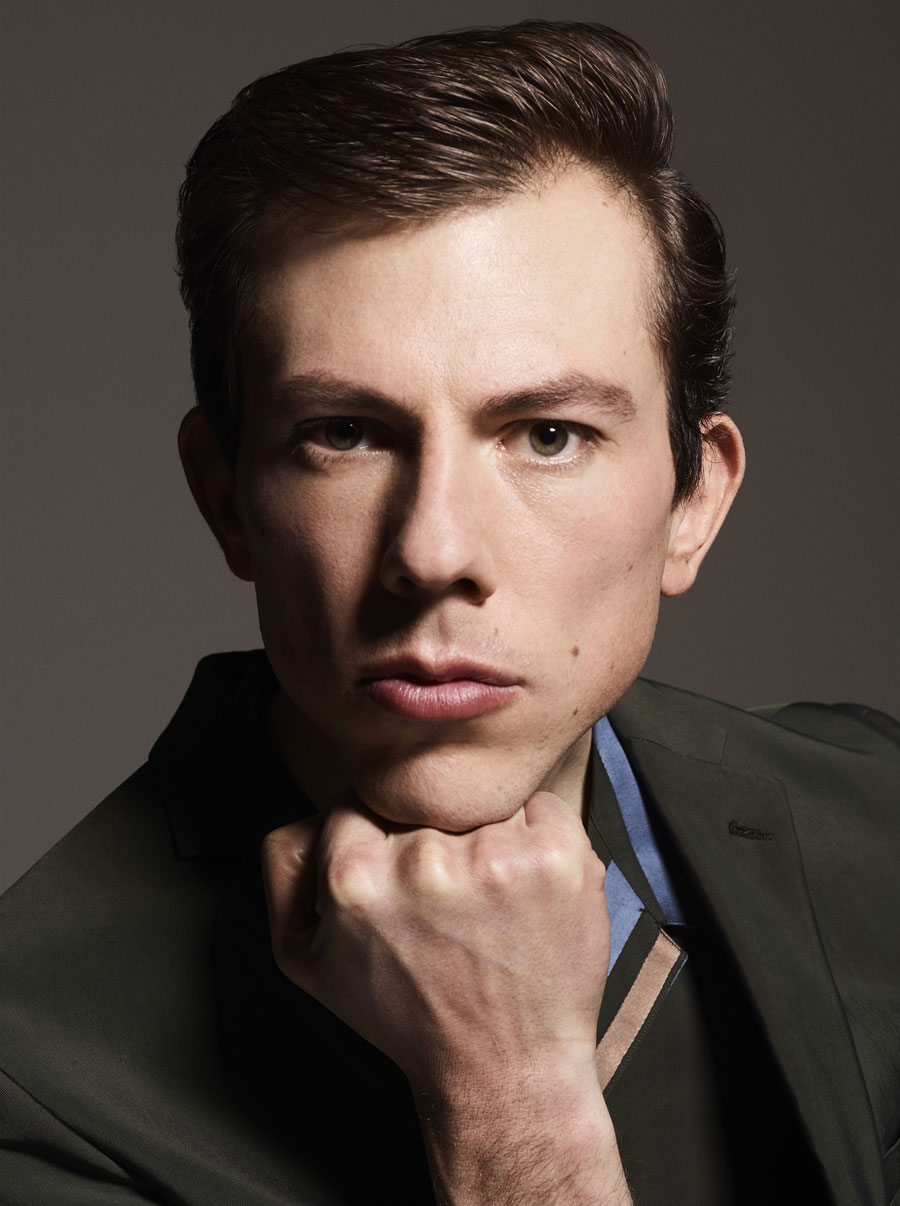
Profile
Italian transmedia artist
and designer.
Italian artist and designer, Matteo Cibic is known for his objects with hybrid functions and anthropomorphic and joyful shapes.
He works indiscriminately with industrial processes and small artisans, for luxury brands, collectors and hi-tech companies.
His works are displayed in museums, institutions and galleries worldwide.
Matteo is an international award winning designer, and his works are published internationally.
He has been awarded International Young Talent of the Year 2017 by Elle Decor.